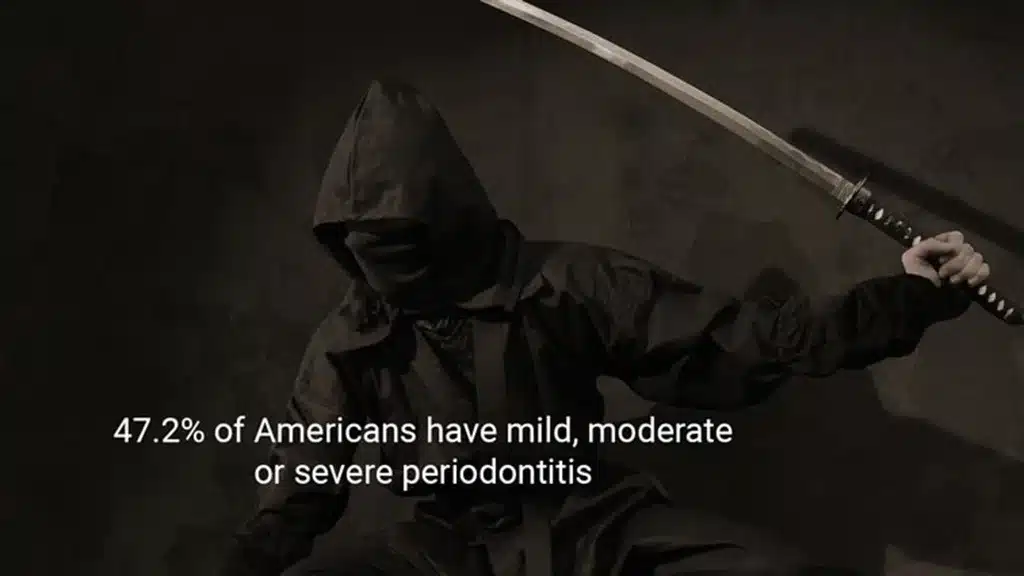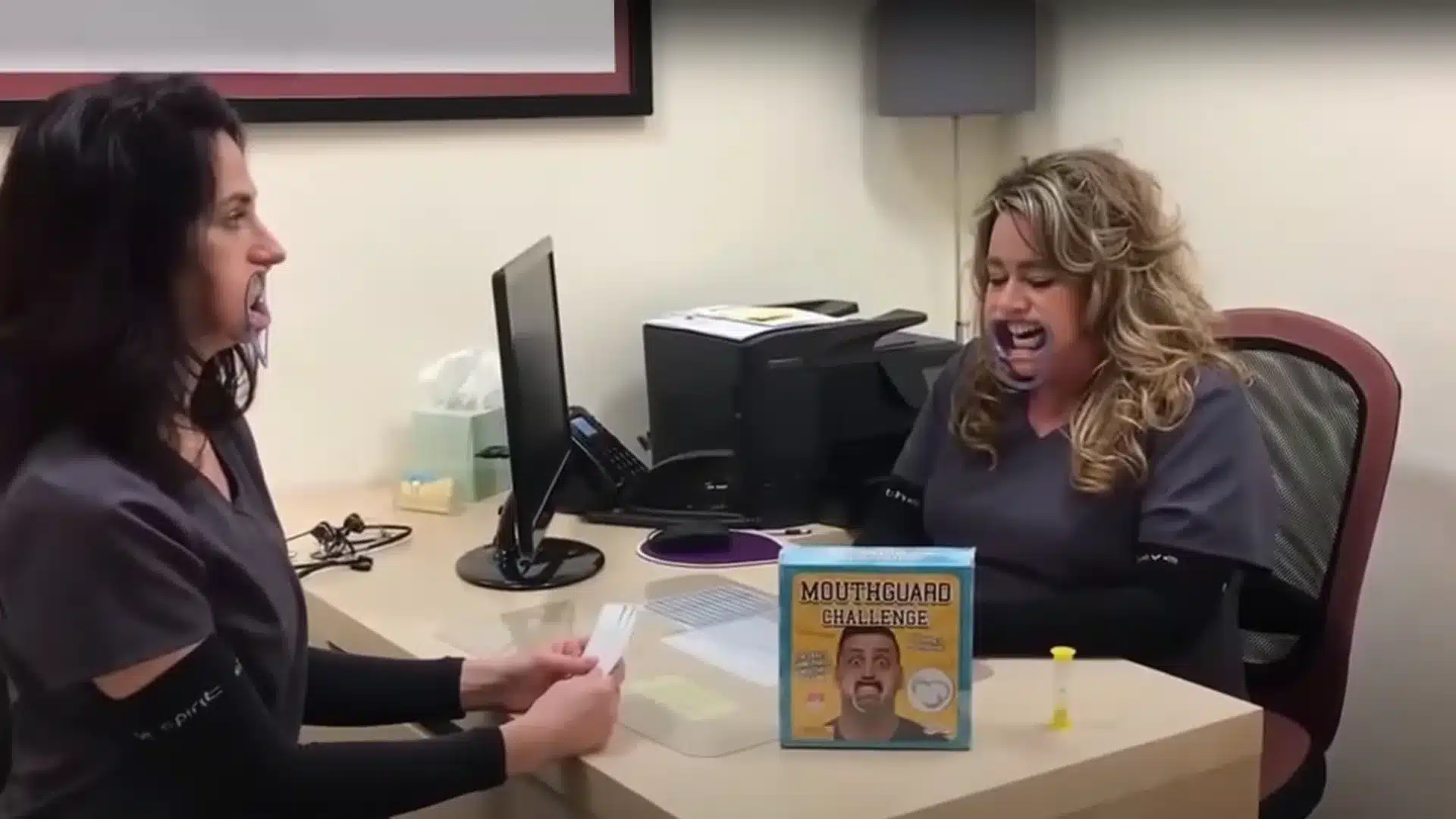Hello Tooth Fans!
April is nearly over, can you believe it? And it seems we’re finally starting to see some of that spring weather we’ve been anxiously awaiting! Things have been crazy busy at our little office, and I feel like I’ve been on tour lately with the amount of traveling I’ve been doing.
The great state of Maine requires a dentist to complete 40 hours of continuing education every 2 years. Would you believe I’ve already logged nearly 100 hours in continuing education credits this year? I said I’ve been doing a lot of traveling lately. But no, I’m not on tour, I’m traveling to learn. Am I crazy? Absolutely . . . but man am I ever addicted to learning and being the best dentist I can be! Dr. Drews and I both value continuing education, not only so we can brag about it in blog posts and impress people at cocktail parties, but (more importantly) so that we can provide the best dental care possible to you, our patients.
Periodontal Disease is Everywhere
I decided to write about periodontal disease today because even though only one of the courses I’ve taken (about 8 of my 92 CE hours) has been specifically focused on periodontal disease, I have heard about it at every single course and learned something new about it at each one.
You might say this makes perfect sense since the gums and jawbone are at the very foundation of where our teeth are. In fact, I often use that analogy when people ask my why they need to get their teeth cleaned instead of only focusing on their fillings. It’s like this: If you have a crack in the foundation of your house; you don’t want to start construction on the third floor before you’ve made sure the foundation is solid.
The bone and gums are the foundation for your teeth and if they’re not happy, your teeth won’t be either. There’s nothing new about that, but the way we talk about periodontal disease, and to some extent the way we treat it, evolves continually.
What is Periodontal Disease?
Well, perio means around and dontal refers to the teeth, so periodontal diseases are infections of the structures around the teeth (gums, periodontal ligament and alveolar bone).
The first stage is a term you’ve all heard before, gingivitis. Gingivitis occurs when plaque accumulates and causes swelling of the gum tissue. At this stage inflammation occurs as your body reacts to this plaque like a foreign body and grows new blood vessels to the area to try to fight the infection.
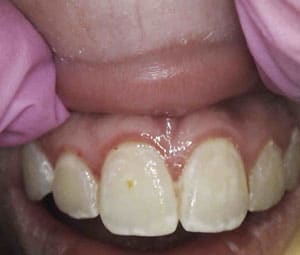
You’ll notice there is a red “collar” around the gum tissue in this image, and when this patient brushes and flosses the area it is more likely to bleed. Allowing the plaque to stay too long will form calculus, or tartar when it reacts with the minerals in the saliva. That’s the hard stuff that doesn’t come off with your toothbrush or floss.
Your friendly neighborhood hygienist has you covered on that front, as that’s the stuff they scale off when you have your regular cleanings done.
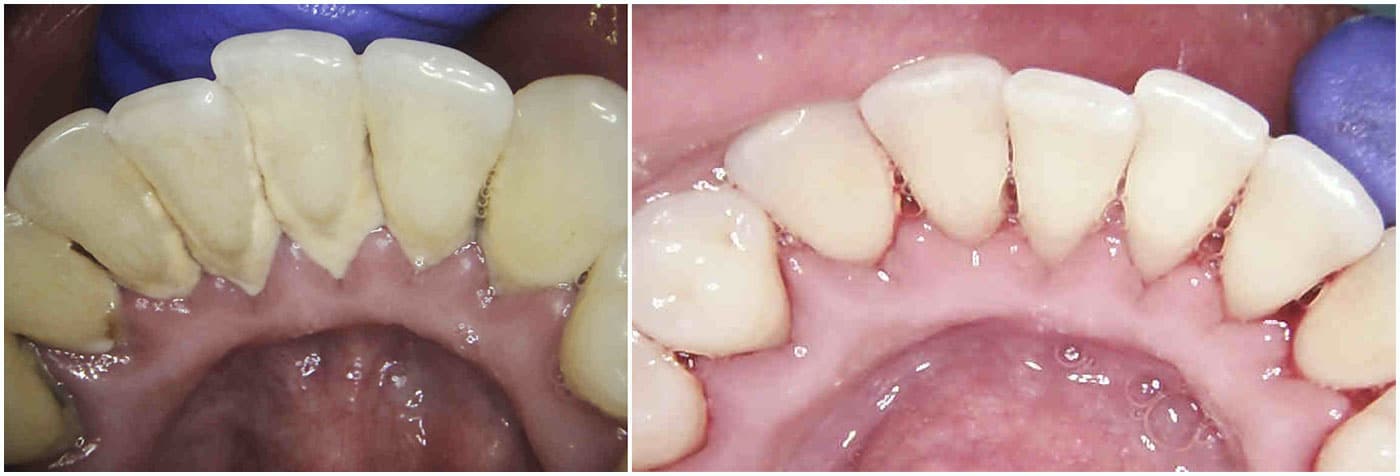
Allow that calculus to stay there too long, and in some people it causes periodontitis. The new blood vessels that have grown in carry white blood cells, and depending on your immune response, those white blood cells can go crazy and actually irreversibly destroy the jaw bone supporting your teeth. As the bone shrinks down, the gums follow and this process is called recession.
Can This Be Treated?
Absolutely. While there are some natural remedies for gum disease, we tailor the type of treatment we provide you to your individual dental health needs. This is why we take those little probing measurements at your initial visit (and later at routine hygiene visits), and part of the reason we take routine radiographs (x-rays) to assess your bone levels.
For many patients, those with gingivitis or who just have a small amount of tartar buildup (even the best brushers and flossers can get mild calculus buildup over time), a routine dental cleaning with your friendly neighborhood dental hygienists should suffice. Once the blood vessels see there is nothing to react to any longer, they shrink and the gums go back to normal.

The CDC estimates that 47.2% of Americans have mild, moderate, or severe periodontitis though and it increases with age, 70.1% of adults 65 years and older have periodontal disease.
This means that nearly half of us have a disease which has irreversibly damaged us in some way, and this is not as easy to treat. And this is where we have to change the way we are discussing and thinking about periodontal disease: it’s not an infection that can be fixed or cured; rather it is a chronic inflammatory disease process that we can manage.
In this case, “just a cleaning” won’t effectively manage the disease because it’s not enough to simply remove the tartar above the gumline and 3 mm below it every 6 months and call it good. To effectively clean under the gumline any further, we need to numb the area and reach further down to remove the underlying tartar. And if the pockets are particularly deep, this sometimes requires surgical access so we can reach further down the root.
These procedures, nonsurgical, and surgical scaling and root planing respectively, are not required EVERY time you come in for a “cleaning,” but initially to treat the disease and then periodically depending on the rate of tartar buildup and your body’s response to this buildup.
Most times, after your initial scaling and root planing visit, you will require “periodontal maintenance” visits at regular intervals, typically every 3-4 months. Again, these visits are more frequent in order to help manage the disease process as disrupting the biofilm accumulating on your teeth and removing the tartar will help keep your immune response to these toxins at a tolerable level, and prevent further destruction of bone and further inflammation in your blood vessels which connect to the rest of your body!
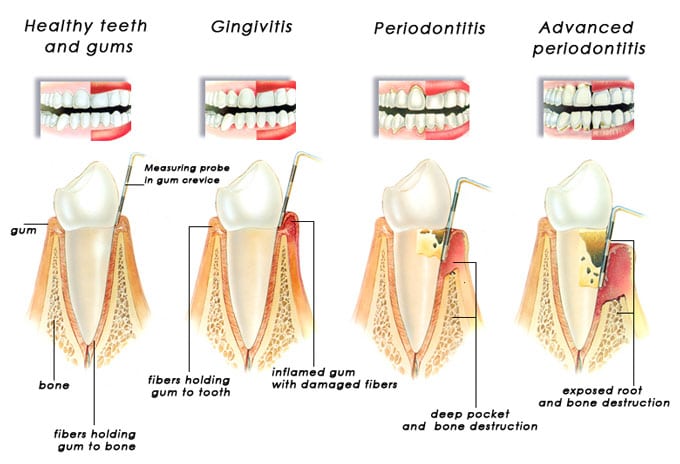
Consequences of No Treatment or Insufficient Treatment
When you think about it, periodontitis is a lot like a ninja: silent but deadly. It really is a silent disease a lot of times, just like high blood pressure. And, just like high blood pressure, leaving it untreated can have devastating consequences. The following systemic (whole body) conditions have been linked to periodontal disease:
- Heart disease
- Stroke
- Arthritis
- Diabetes
- Preterm birth or low birth weight
- Cancer (particularly head and neck, lung, kidney, and blood cell cancers)
- Alzheimer’s disease
(Periodontitis and systemic diseases: A literature review)
I could probably write separate blog posts on the association levels with all these diseases, but the one I find most fascinating is Alzheimer’s since a recent study has actually found porphyromonas gingivalis, the primary culprit in periodontal disease, in the brain tissue of those who have passed away with Alzheimer’s. (Porphyromonas gingivalis in Alzheimer’s disease brains: Evidence for disease causation and treatment with small-molecule inhibitors.) It doesn’t get more clear cut than that!
Of course there are oral health consequences of not treating periodontal disease, namely further destruction of the jawbone and subsequent tooth loss. It also has a foul odor, which those of us who work in the field can usually identify from across the room! (It’s a blessing and a curse.) The systemic disease aspect, however, tends to be a bit more concerning to people since it can actually shorten your lifespan. Who cares if you keep your teeth if you’re not alive to use them, right?
One of the most compelling illustrations of the severity of the infection with periodontal disease I read about was 11 years ago in a dental journal where the author stated that the area of infection in your gum tissue, when you add up all the pockets around your teeth, is about the size of your fist.
If you had a fist-sized infection on your leg or your elbow you’d most certainly go to the doctor to get it treated. Sadly, when it’s in your mouth it tends to get overlooked or placed on the back burner, even though the consequences of not treating it are just as serious.
Take Home Message?
We always promise to do our best to help you manage any dental condition you may have, including periodontal disease, but it’s a partnership, not a one sided effort on either end. At home, the most effective measures you can take to prevent or manage periodontal disease include:
- Brushing twice a day with an electric toothbrush
- Flossing once a day
- Maintaining your scheduled hygiene visits (frequency varies for each person based on your condition)
- Those with moderate to severe periodontal disease may want to consider taking a daily baby aspirin (81 mg) to help with inflammation
Dr. Drews and I will continue our never-ending quest for knowledge with our frequent CE courses as we strive to provide you with the best and most up to date care possible. If it’s been a minute since you’ve seen us, please contact the office (207-782-5308) so we can help keep your gums (and whole body) healthy and happy. 🙂
Love & Floss Like a Boss,



